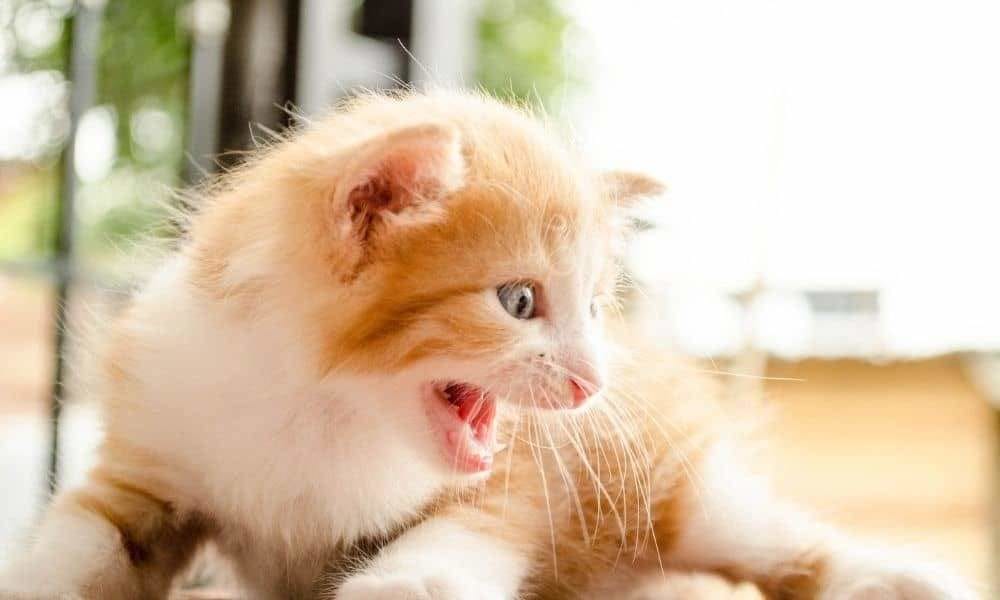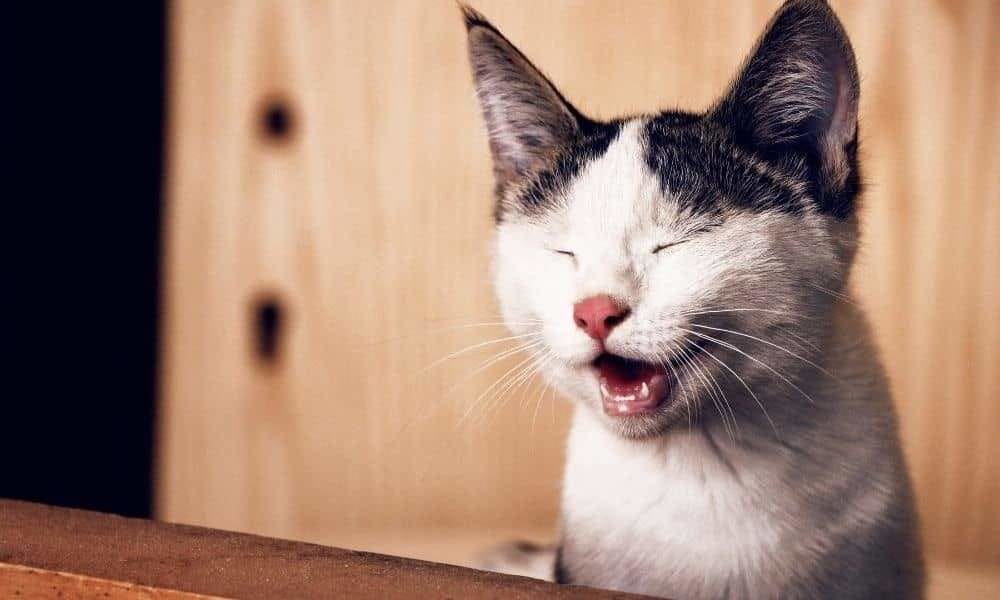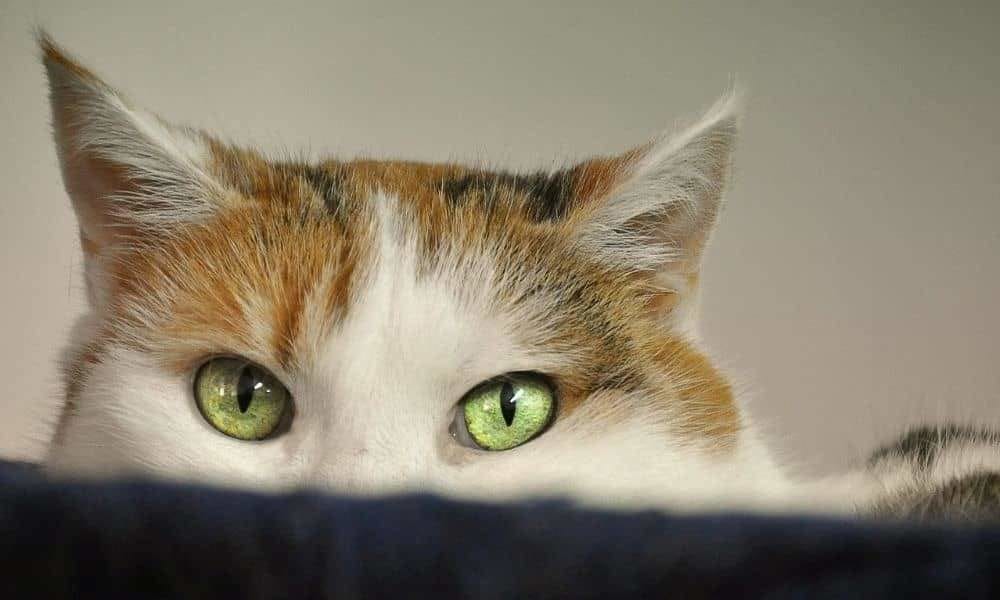Treatment for behavioral problems depends on the disorder and its outlook. Typically, the program begins with problem prevention and avoidance , while you and your veterinarian develop strategies to modify the cat's behavior.

Prevention is particularly important in the event of aggression, in order to guarantee the safety of owners and pets. It is also important to avoid problem behaviors, because repeating abnormal behavior can make the problem worse if the cat is successful in achieving its goal (e.g., escaping or withdrawing from the stimulus). Additionally, each exposure to an unpleasant outcome can make anxiety worse.

Is it possible to change my cat's behavior?
Improvement is usually a slow, gradual process. Treating abnormal behavior takes time and commitment on the part of pet owners. There are no quick fixes or “magic pills” for behavioral problems. Modifying the animal's behavior is done through behavior modification techniques aimed at obtaining and rewarding better behavior.

It may be necessary to modify the cat's home environment to move it away from anything that is stimulating the abnormal behavior or areas in which the problem is occurring. Products that improve safety, reduce anxiety, or accelerate improvements may also be used. Medications and natural products may also be indicated for certain pets and certain problems.
What techniques can I use to modify my cat's behavior?
The most commonly used techniques to modify cat behavior are habituation, extinction, desensitization, counterconditioning, response substitution, and shaping. A behavior modification technique called flooding is not used very often because it is more likely to make animals' behavior worse.
Punishment: a technique that works?

Although it is claimed that punishment is frequently used with varying degrees of success, few people use it correctly. For a punishment (like yelling at the cat) to be effective, it must occur at the time the behavior begins, be applied consistently, and be strong enough to stop the unwanted behavior.
Most punishments are not given at the right time or are not of the appropriate type for the situation. In fact, studies have shown that punishment and confrontation training techniques are more likely to lead to fear , avoidance, and increased aggression.
Most behavior modification techniques are not difficult to learn and can be used successfully as part of preventative techniques. However, they require an investment of time and effort. Here is a brief overview of the basic principles of these techniques.
Habituation

Habituation is a simple form of learning that involves no reward. It is simply the termination or diminution of a response to a stimulus that results from repeated or prolonged exposure to that stimulus. For example, a cat that gets used to one type of sound does not necessarily get used to other sounds. Habituation is not the same as the inability to respond to stimulation due to fatigue, sensory adaptation, or injury.
The effects of addiction are usually long-lasting. However, if an animal is repeatedly exposed to a potentially dangerous stimulus (such as a predator) without being harmed, habituation usually does not occur. For this reason, scientists believe that responses to dangerous stimuli may exhibit an inherited resistance to habituation.
Spontaneous recovery is associated with habituation . If a long period of time passes between a cat experiencing an event to which it had become accustomed and re-exposure to that same event, the animal may react again. For example, a cat sitting near a window may startle at the sound of traffic passing the house. The cat ends up ignoring the traffic, because it learns that this noise has no consequences. If there has been no traffic for a while, the next car passing may startle the cat.
The conditioning

Conditioning refers to the associations between stimuli and behavior. For example, a hungry cat may drool when it sees food (the stimulus). If every time the hungry cat sees food it also hears a can opener, after several times the sound of the can opener alone will cause the cat to drool. This is called conditioning. Opening a can elicits the same reaction as seeing food. After several times, the cat learned to associate the sound of the can opener with food.
The reinforcement

Reinforcement is an event that increases the chance that a certain behavior will be repeated. Reinforcements can be positive or negative. When positive reinforcement (a reward) is used in training, there is a positive relationship between the behavior and its consequences. The more the animal adopts a behavior, the more positive reinforcement it receives. Which causes this behavior to increase.
Negative reinforcement (which many people mistakenly think of as punishment) is something unpleasant that increases a behavior when removed. For example, some cats find it unpleasant to be held on their laps. When a cat squirms and escapes from your lap, it is rewarded by being released from your grip. After several times, releasing the restraint will increase the chances that your cat will try to escape the next time.

Second-order reinforcers are signals that can be used remotely to let the cat know that a reward is coming. Commonly used second-order reinforcers are words, such as "good kitten," clickers, and whistles .
By carefully associating them with a primary reward (such as food or petting), second-order reinforcers can generate the same response as the reward itself, provided the association is repeated occasionally.

For example, a clicker can be paired with a treat to reward an animal for coming. By pairing the clicker with food, you can train the cat to come from farther away, while continuing to reward the behavior using the clicker. Positive training and clicker training have recently become very popular and work with both cats and dogs.
However, it is possible to do an excellent job of positive training without using second-order reinforcers. Clicker training requires frequent practice and excellent timing . In some situations involving problem behaviors, incorrect use of a clicker may hinder, rather than help, a behavior modification program.
Extinction

Extinction is a response that ceases when the reward is removed. An example of extinction is ignoring a cat that howls at night for attention. If owners get up to feed the cat (or even, in many cases, yell at it), the behavior continues. If they stop feeding the cat or giving it attention, the cat will eventually stop howling at night because the reward is no longer there.
However, occasionally feeding the cat in response to its howls will only reinforce the pattern. The more valuable the original reward, the longer the reward was given, and the more unsure the cat is that the reward was truly removed, the greater the resistance to extinction.

Because there is often an association between receiving the reward and the intensity of the behavior, the intensity or frequency of the behavior you are trying to eliminate usually increases at the onset of extinction.
In other words, a behavior you're trying to extinguish often gets worse before it gets better. It is essential that you do not give in . This will only make extinction more difficult. The cat has learned that although your threshold has increased, it can overcome it by working harder.
The modeling

Modeling is a learning technique that works well for cats who don't know what response the trainer wants. Modeling works by incremental approximations and allows the cat to be rewarded initially for any behavior that resembles the desired end result.
For example, when teaching a cat to come , toss a treat in front of it when it takes a step or two in your direction to increase the chances that it will approach. Then, you can give the cat a treat when it takes several steps towards you, and finally, only when it comes up to you.
Desensitization

Desensitization is a way to gradually teach a cat to tolerate a situation by carefully exposing it to that situation in small steps. If a cat is afraid of another cat in the house, gradual, controlled exposure to the other animal can be arranged to desensitize the fearful cat.
The second cat can be placed in a carrier and kept out of the room for a minute or two. The cat in the carrier can be brought closer gradually and stay in the room longer, but only if the fearful cat remains calm and relaxed. To achieve better results, desensitization is often combined with counterconditioning methods.
Counterconditioning

Counterconditioning is a method of reducing unwanted behavior by teaching the cat to replace it with another, more favorable behavior. In the fearful cat example, the cat will learn faster if it is first taught to sit and relax in exchange for a treat. The cat should be calm and show through its eyes, posture and facial expressions that it is not upset or agitated in any way.
Once this routine has been learned, we add desensitization by placing the other cat (in a cage at first) on the other side of the room for a few minutes. If at any point the cat begins to become anxious or act as if it wants to leave, the other cat should be moved further away until the nervous cat relaxes. Relaxation is the key and the first step to modifying the fearful cat's behavior. There is no point in having the cat stay if it is clearly in distress.

Counterconditioning and desensitization can take a lot of time and effort. The exercises should be repeated frequently so that the unwanted behavior decreases to an acceptable level. Moving too fast causes anxiety and defeats any progress in the behavior modification program.
The punishment

Punishment is also known as aversive conditioning. This is any unpleasant event that reduces the chance that a behavior will be repeated. Punishment is not the same as negative reinforcement (see above). To be effective, punishment must occur as soon as possible (within a few seconds of the behavior beginning), and it must be consistent and appropriate.
The essential factors in punishment are timing, consistency, appropriate intensity, and the presence of a reward after the unwanted behavior ends. This is the part of treatment most frequently ignored by people whose pets have behavioral problems. Owners often resort to physical punishment first, but this need not be physical.
Additionally, punishment is as difficult to use correctly as counterconditioning and desensitization. Punishments are never an easy way out and are likely to fail. It can also lead to other negative consequences, such as increased risk of fear or aggression.
Call a professional

Here are the different techniques to change your cat's bad habits or encourage certain behaviors such as petting. Do not hesitate to call a veterinarian to help you with this process.
Indeed, it is essential to seek qualified help, especially in the case of cats that bite or scratch. With treatment, it may be possible to desensitize the cat to the circumstances in which aggressive behavior occurs, but avoidance is the key to minimizing the danger.
